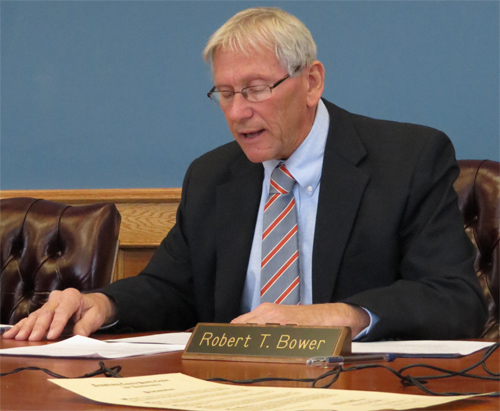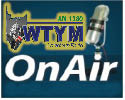Telephone Surcharges Not Enough to Fund Emergency Services

County Commissioner Bob Bower remembered when the original surcharges were written, but they haven’t been raised since - causing him to support a resolution along with his fellow commissioners to increase them.
by Jonathan Weaver
The Public Safety Emergency Telephone Act was originally implemented so that 9-1-1 emergency operations across the State could be self-sustaining, but more and more of the increasing expense is falling on taxpayer shoulders.
Since 1990, County residents have paid a $1-1.50 surcharge monthly for wire lines, wireless and Voice over Internet Protocol (VoIP) subscriptions, but it just isn’t enough anymore, County 9-1-1 Director Ron Baustert explained.
“The wireless funding program was established in 2000 at a fee of $1 for every wireless device, meant to support 9-1-1 as well as other funding established in 1990 – those rates have never changed, and have never even been adjusted for inflation,” Baustert said. “Today, 9-1-1 is becoming a financial difficulty in that the taxpayers are picking up a majority of the bill. The budget this year is almost 50 percent funded by County funds.
“We are currently getting 38 percent funding from the wireless fees – it’s just not sufficient enough right now,” Baustert continued later. “Every year, access lines go down from home phones and cell phone lines go up – which means we lose (an additional) 50 cents for every one of them.”
Fees would be at least $1.72 if adjusted for inflation.
Commissioner Bob Bower was one who wrote the original plan starting in 1990 and supported increasing the surcharge rates.
“Since then, wireless has become so much more popular,” Bower said.
His two fellow commissioners – David Battaglia and Rich Fink - unanimously supported the resolution as well in order to support current and next generation operational needs.
It is also the top goal of the County Commissioners Association of Pennsylvania – and widely-discussed nationally within the National Emergency Number Association (NENA) – based in Alexandria, Virginia – and The Association of Public-Safety Communications Officials (APCO) – with headquarters in Daytona Beach, Fla.
“The intent of the original law was to fully fund counties’ eligible 9-1-1 costs,” Bower read in the proclamation.
Changes have to be negotiated before June 30, 2015 – the last day of the fiscal year and the date surcharges would be renewed at its current rate.
Baustert said the current fee structure is not prohibiting implementation of technology upgrades at the Armstrong Emergency Operations Center in Rayburn Township – with installations coming in June that will allow for emergency text messages that might be up-and-running by the end of the calendar year. That upgrade is already paid for.
He still said the technology increases were unforeseen.
“That is an understatement,” Baustert said. “Nobody saw texting to 9-1-1, nobody saw the trunk radio systems, nobody saw connecting to Region 13 – those are all very expensive propositions to build and are also very expensive every year to maintain with maintenance contracts.”
Current surcharge rates are consistently renewed on a yearly basis.
“It has to be accomplished. It’s financially-killing every 9-1-1 center, not just Armstrong, but in the State,” Baustert said.
Fink said legislators will have the opportunity to visit the Emergency Operations Center to view current emergency resources and learn the impact these surcharges (or lack thereof) have on the County budget and on taxpayers.
Armstrong 9-1-1 has a nearly-$1.75 million budget in 2015, also a nearly five percent increase.
A copy of the signed resolution will also be sent to County legislators, State Governor Tom Wolf and Pennsylvania Emergency Management Agency Director Richard Flinn, Jr.


